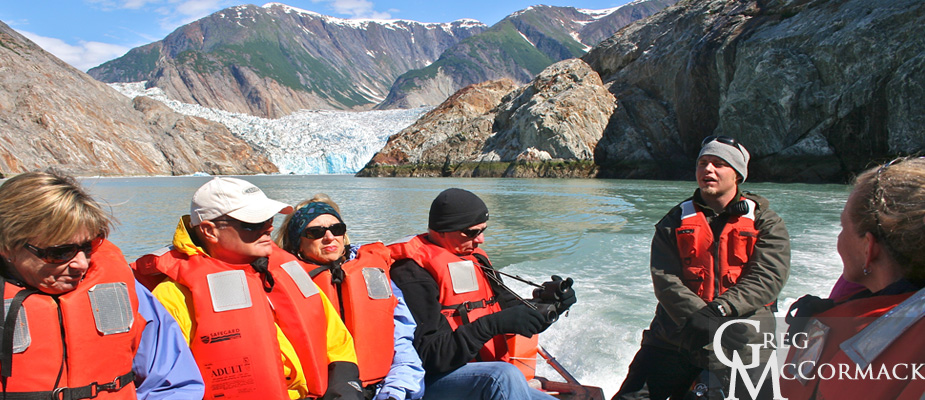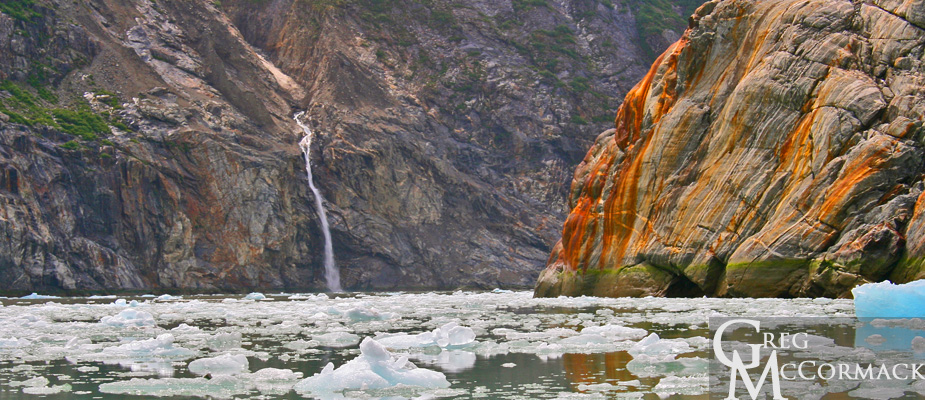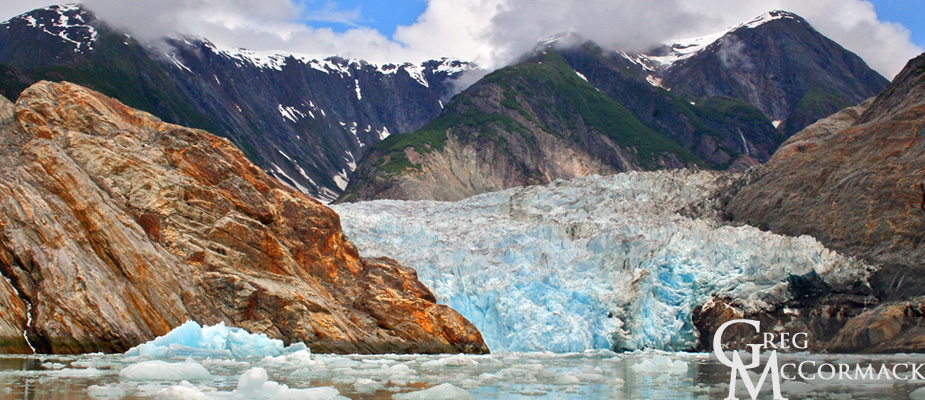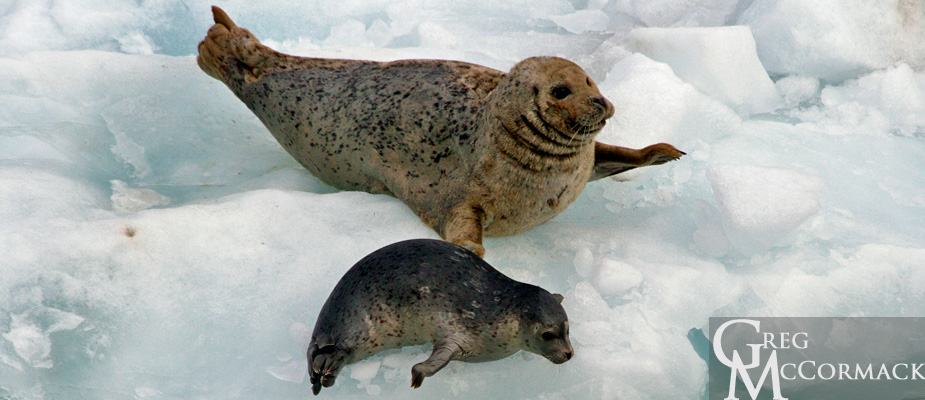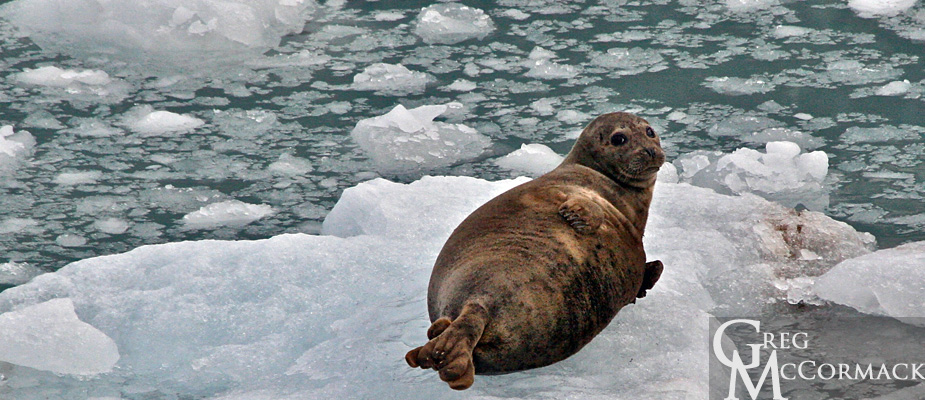Search results
Sunday | July 17
October 3, 2011 by admin
Filed under InnerSea Discoveries
Tracy Arm & Sawyer Glaciers
“Domes swell against the sky in fine lines as lofty and as perfect in form as those of the California valley, and rock-fronts stand forward, as sheer and as nobly sculpted. No ice-work that I have ever seen surpasses this, either in the magnitude of the features or effectiveness of composition.” –John Muir
John Muir, writing in his book Travels in Alaska, described Tracy Arm as a “wild unfinished Yosemite”.
We awake to a fine day. The anchor is lifted at 6 a.m. and the Wilderness Discoverer cruises up the magnificent fiord that is Tracy Arm. Yosemite-like domes, waterfalls that seem to come right out of the sky, and rainforests that exhibit many shades of green are passed as we motor at the speed of 9-knots up the 23-miles to the face of the Sawyer Glacier.
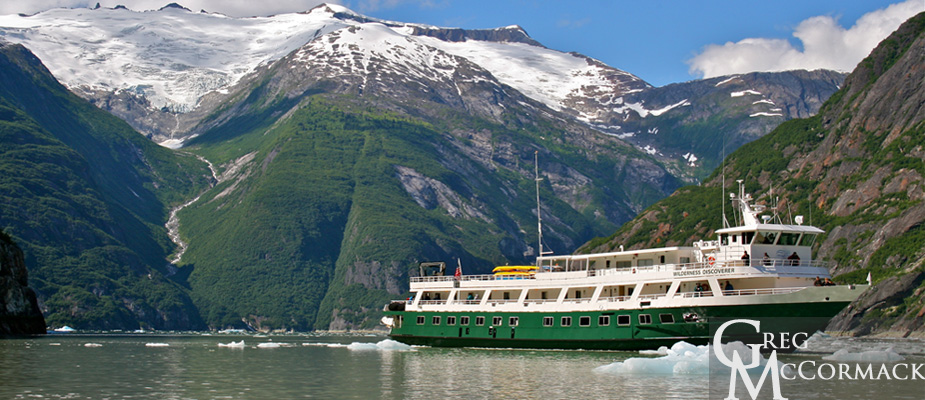
This is the Tongass National Forest, the largest National Forest in the United States at almost 17 million acres in size. It ranges from the Southeast Alaska panhandle between Ketchikan and Yakutat. It incorporates the Alexander Archipelago, located in the Inside Passage between the Coast Mountain Range and the Gulf of Alaska in the Northeast Pacific Ocean. The Tongass happens to have the largest contiguous, intact temperate rainforest in the world.
The temperate rainforest biome ranges from the narrow strip of land between northern California and Kodiak Island, Alaska. Some of the hallmarks of this rainforest is the presence of Sitka Spruce, a profusion of epiphytes such as mosses and lichens, a climate regime that includes around 100-inches of precipitation a year and the presence of nurse logs.
Small boat tours are offered to bring guests up close to the Sawyer Glacier. Photographic opportunities abound for camera-toting guests.
Brash ice is quite thick. Birds are flying back and forth in front of the tidewater glacier and seals are hauled out on small ice-bergs or “growlers”.
We are lucky to have two wilderness kayak rangers join us with two of their “artists-in-residence” volunteers. Our Tongass National Forest Rangers Solan Jensen and Sean Reilly give an insightful talk on the history of wilderness in the dining lounge.
After disembarking the kayak rangers, we ask guests to participate in three rounds of talks surrounding our adventure program of kayaking, stand-up paddleboarding or SUP, and how to behave in bear country. I lead the talk on SUP in the lounge with an assistant to “model” appropriate techniques.
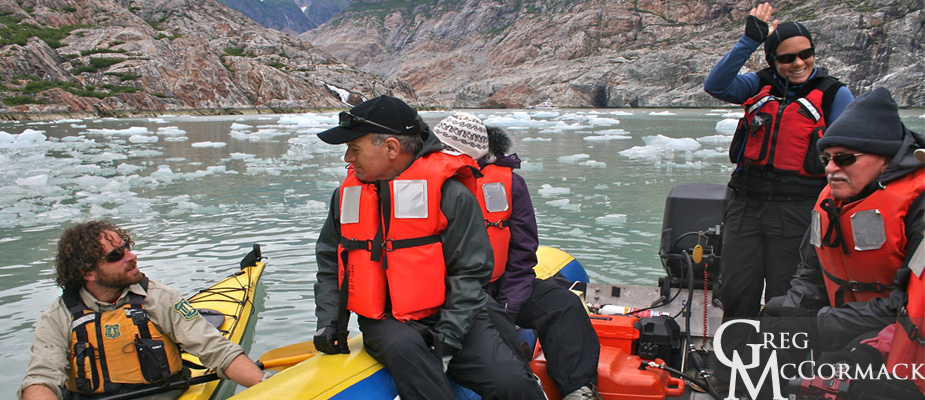
It’s amazing how SUP has become the latest trend in ocean sports. As a fitness sport, it uses all of the major muscle groups. It works the core and legs while you try to balance and the upper body while paddling.
It’s easy to carry a SUP and that is one of the major advantages over having a sea kayak. On calm, flat days the only real hazard for SUP’ers is navigating wakes from passing boats. These boards are wider and more stable than a regular surfboard. However, I would not recommended trying to walk the nose and “hanging ten”.
For novice paddleboarders, it’s worth trying it more than once to build a comfort level and to see if the sport is enjoyable. Every time you get out on the water while here on vacation will make it that much easier to try it again back home.
The minimal effort of SUP-ing (not a great acronym, I just realized) for just a few minutes while circumnavigating the Wilderness Discoverer will allow a partner or crew to photo-document your efforts. That way you can prove to kith and kin how adventurous you really were in Alaska.
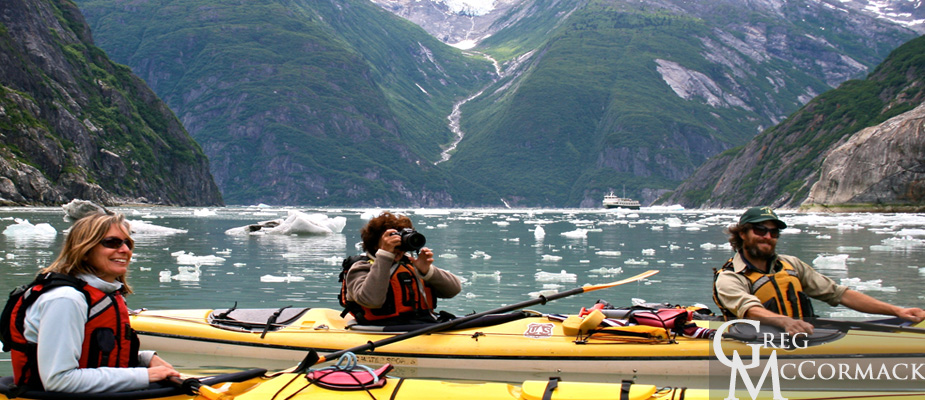
My overall message is to encourage folks to “get up, stand up…stand-up for bragging rights!”
The afternoon is spent whale watching in the waters adjacent to Admiralty Island National Monument. Kootznahoo or “Fortress of the Bears”, has the greatest concentration of brown bears in the world, about 1 bear per square mile on the 1,700 square mile island. We motor too far away to spot brown bears (visitors that want to see bears can go to Pack Creek on the northeast side of the island).
Humpback whales are spotted exhibiting a range of behavior such as spouting, lob-tailing and breaching. These fascinating baleen whales have travelled all the way from Hawai’i to feed all summer long.
Friends stay up late enjoying a lingering twilight and the ever-changing seascapes that almost hypnotize to a state of nirvana.
Sunday | July 3rd
September 14, 2011 by admin
Filed under InnerSea Discoveries
“Never before this had I been embosomed in scenery so hopelessly beyond description. Tracing shining ways through fjord and sound, past forests and waterfall, islands and mountains and far azure headlands, it seems as if surely we must at length have reached the very paradise of the poets, the abode of the blessed.” –John Muir
At 06:00 the anchor is lifted and the Wilderness Discoverer begins its journey up the 30-mile long Tracy Arm fiord. I like to tell folks that we are all taking a trip back 15,000 years to the Pleistocene Epoch to see what much of the northern latitudes on Earth were like at the southernmost extent of the Wisconsin era glaciation. Basically a person could strap on some skis and continue on ice from Tracy Arm south to present-day Olympia, Washington and head then head east to Cape Cod, Massachusetts.
Tracy Arm—Fords Terror was designated a wilderness area in 1980 with President Jimmy Carter’s passage of the Alaska National Interest Lands Conservation Act (ANILCA). Prior to this it had been designated a National Forest Scenic Area in 1960 and 10 years later a Wilderness Study Area in recognition of the opportunities for solitude and its dramatic beauty.
It was President Lyndon Johnson that signed the Wilderness Act in September of 1964.
It states:
“In order to assure that an increasing population, accompanied by expanding settlement and growing mechanization, does not occupy and modify all areas within the United States and its possessions, leaving no lands designated for preservation and protection in their natural condition, it is hereby declared to be the policy of the Congress to secure for the American people of present and future generations the benefits of an enduring resource of wilderness.”
Everybody seems to appreciate being a visitor to this wilderness as they are out on decks to soak-in the scenery, admire ice-bers and to look for wildlife.
We offer small boat tours. Adventure-seekers enjoy close-up views of the Sawyer Glacier calving ice and the dramatic mountain scenery. I point out the waterfall, located 1.5 miles away from the face of the Sawyer Glacier. When I first started leading folks here in the early to mid-90’s, the glacier was close to this cataract.
People are amazed to see how far it has receded and how much thinning of the glacier has taken place. The barren rock and trim-line of vegetation high up above the recently de-glaciated rubble landscape are reminders of a changing climate.
Harbor seals are spotted on the ice “growlers” or brash ice. Some are seen with pups that were recently born. It takes 6-weeks before pups are weaned off of the mothers milk and are on their own to search for food.
Arctic terns ply the waters, catching schooling fish for their developing young that await in the rock gardens bordering the fiord. Gulls fly back an forth in front of the glacier waiting for the next calving that will churn-up small fish and shrimp for easy-pickings.
Our afternoon and evening is spent looking for and watching whales in Frederick Sound.


